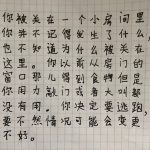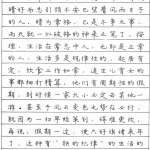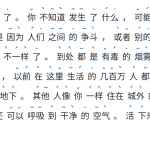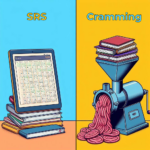Articles in the ‘Beginner’ category Page 20
-
Free and easy audio flashcards for Chinese dictation practice with Anki
Audio flashcards can be great for improving basic listening ability or preparing for 听写/聽寫 or dictation. It used to be time-consuming and difficult to do, but with Anki and good text-to-speech engines, it’s now both easy and free!
Read → -
Reading is a lot like spaced repetition, only better
Learning vocabulary through reading and by using spaced repetition software are both common strategies employed by students learning Chinese, but which one is the most efficient? In this guest article, Kevin Bullaughey from WordSwing compares the two methods in terms of exposure and coverage.
Read → -
Training your Chinese teacher, part 1: Introduction
Finding a good Chinese teacher is not easy, but there are many things you can do to get more out of the time you spend with a teacher, and in a sense, train him or her to better suit your needs and preferences.
Read → -
Review: Language Empowerment: Demystify Chinese culture and fire up your Mandarin + interview with the author
Language Empowerment is a neat little book that manages to pack a lot of information and inspiration into relatively few pages. I highly recommend it for people who have just started learning Chinese or who are interested in doing so. This book covers many topics that you need to know about, but which few textbooks or teachers mention! It is also easy to access and enjoyable to read.
Read → -
36 samples of Chinese handwriting from students and native speakers
This article features 36 samples of Chinese handwriting. The same text was written by native speakers and students with varying backgrounds and time spent learning Chinese.
Read → -
How to improve your Chinese handwriting
Learning to write Chinese by hand is a complex task. This article gives an overview of what it means to write by hand, answering questions like: “Do I need to learn to write by hand?”, “What skills does handwriting in Chinese require?” and” How do I improve my handwriting?”
Read → -
Focusing on Chinese tones without being distracted by Pinyin
When Chinese characters appear next to Pinyin, the familiar letters distract us from the characters. Wouldn’t it be nice if we could keep information about the tones, but throw Pinyin away?
Read → -
Cramming vs. spaced repetition: When to use which method to learn Chinese
Cramming and spaced repetition are viable but opposite methods of reviewing Chinese characters, words and expressions. When should you use which? And Why?
Read → -
8 tips for learning Chinese as an introverted student
Introverts are not necessarily worse language learners than extroverts, but not taking or creating opportunities to speak Mandarin will slow you down. In this article, I share some methods I’ve used to compensate for this as an introvert learner.
Read → -
Learning to unicycle, learning anatomy and learning Chinese
Is learning Chinese more like learning to unicycle or like learning anatomy? It strongly depends on what we’re talking about more precisely. Some aspects of language learning are skills akin to unicycling, others are more about knowing and understanding.
Read →









